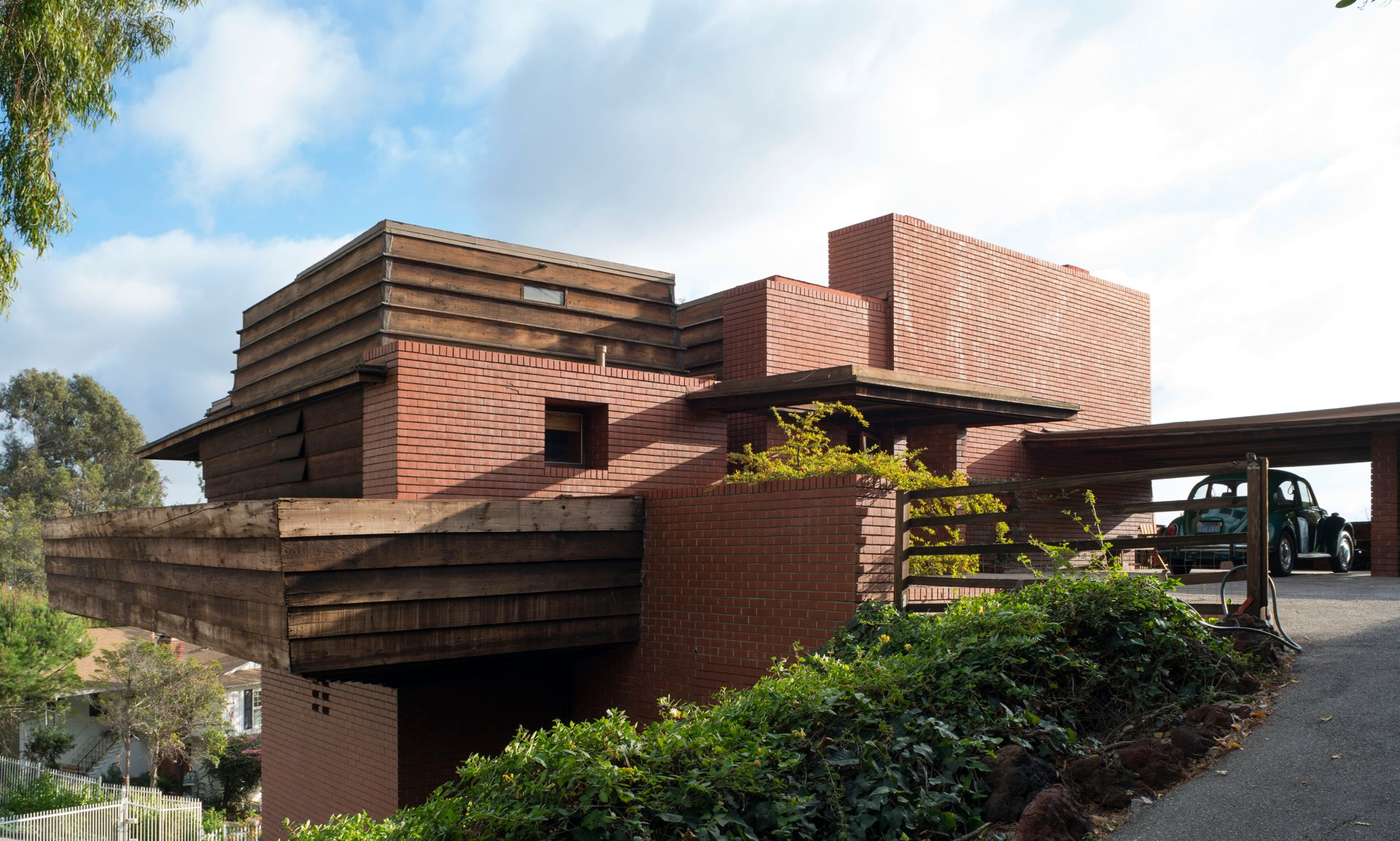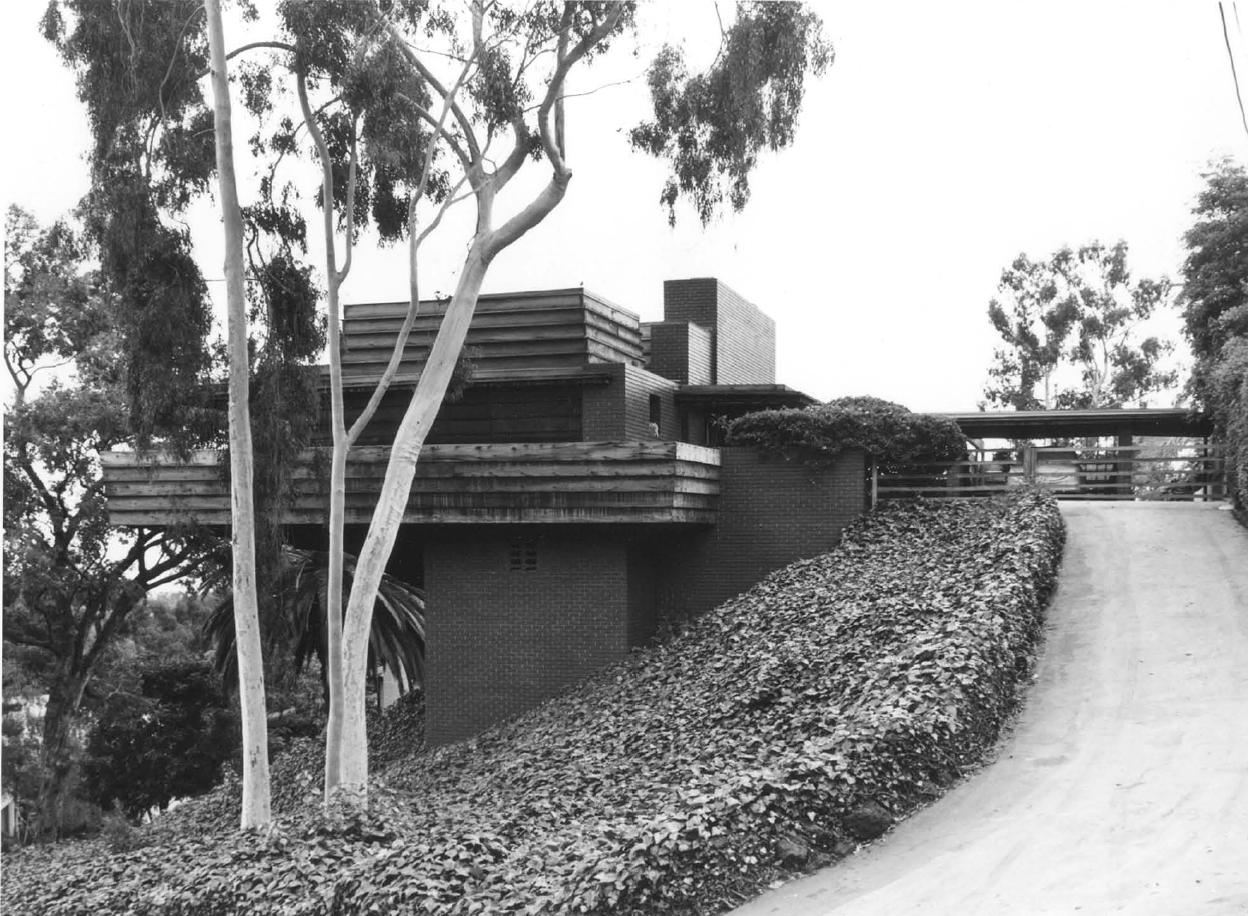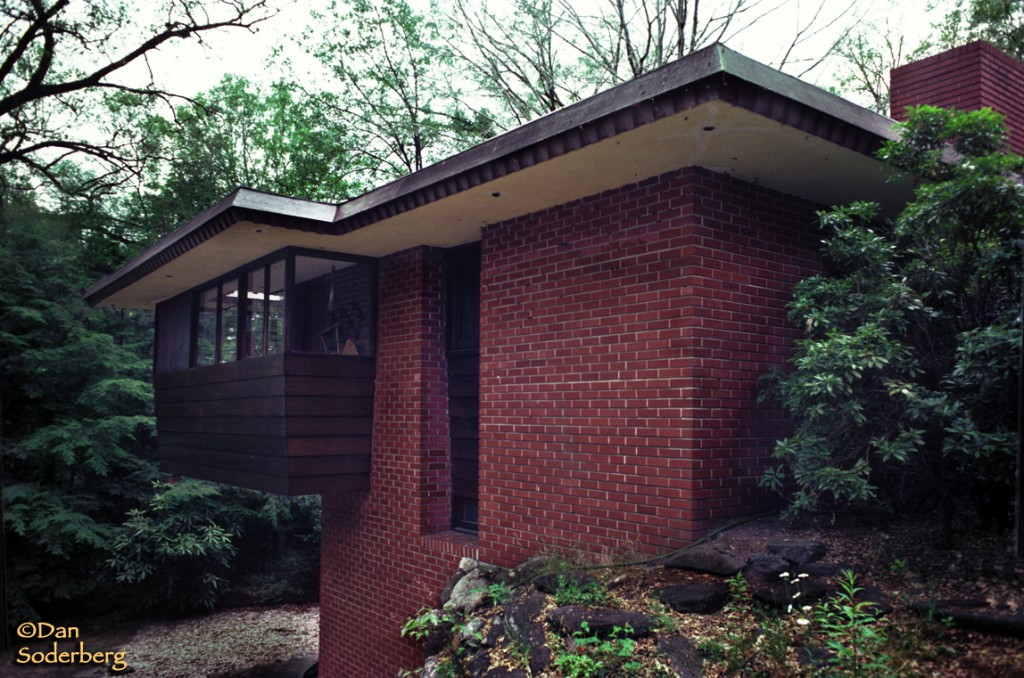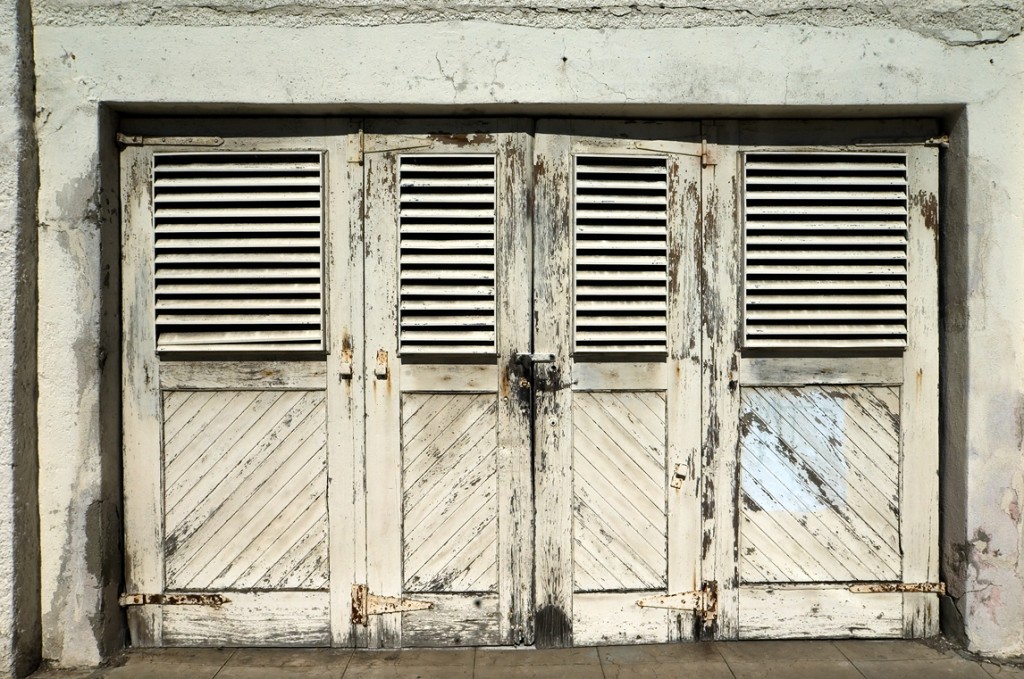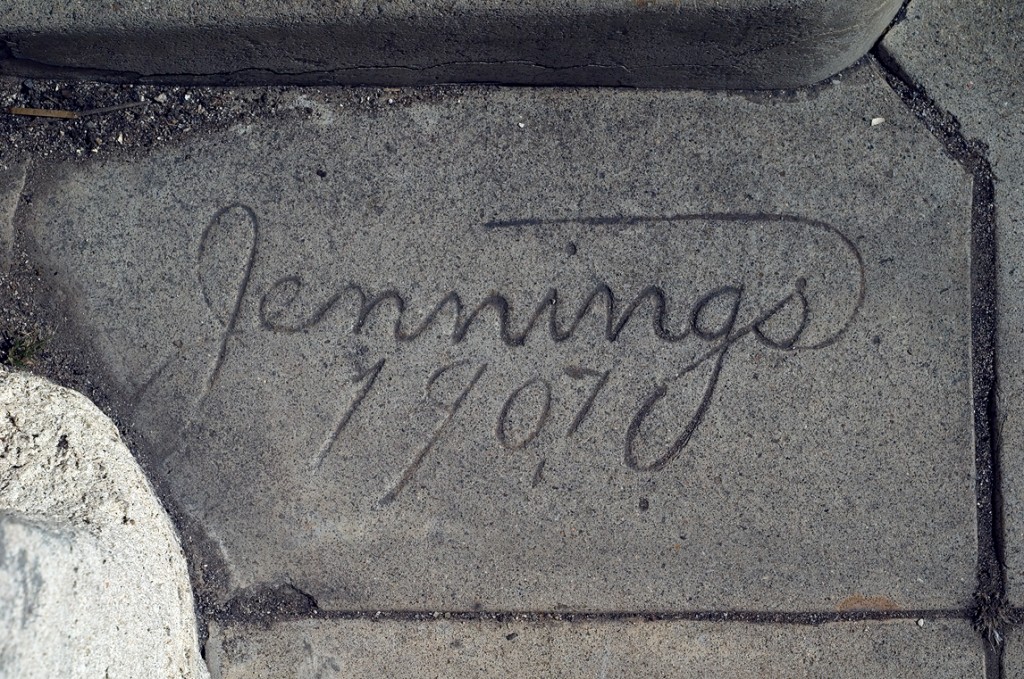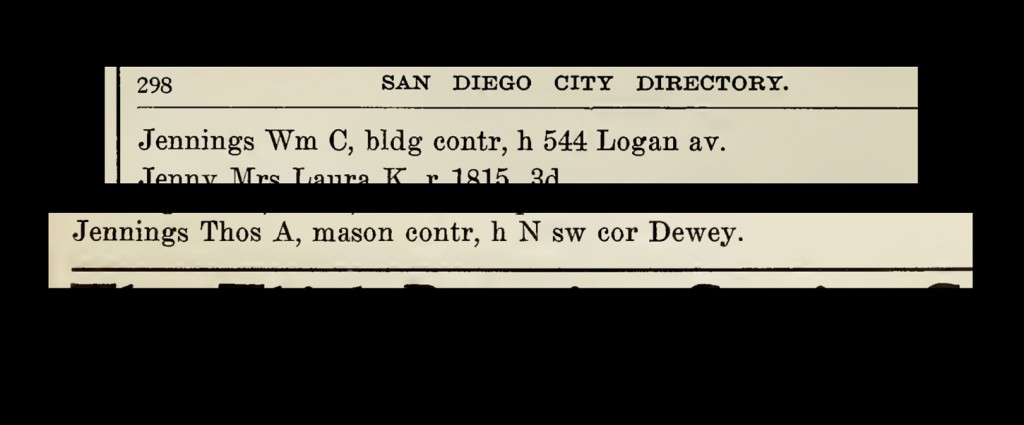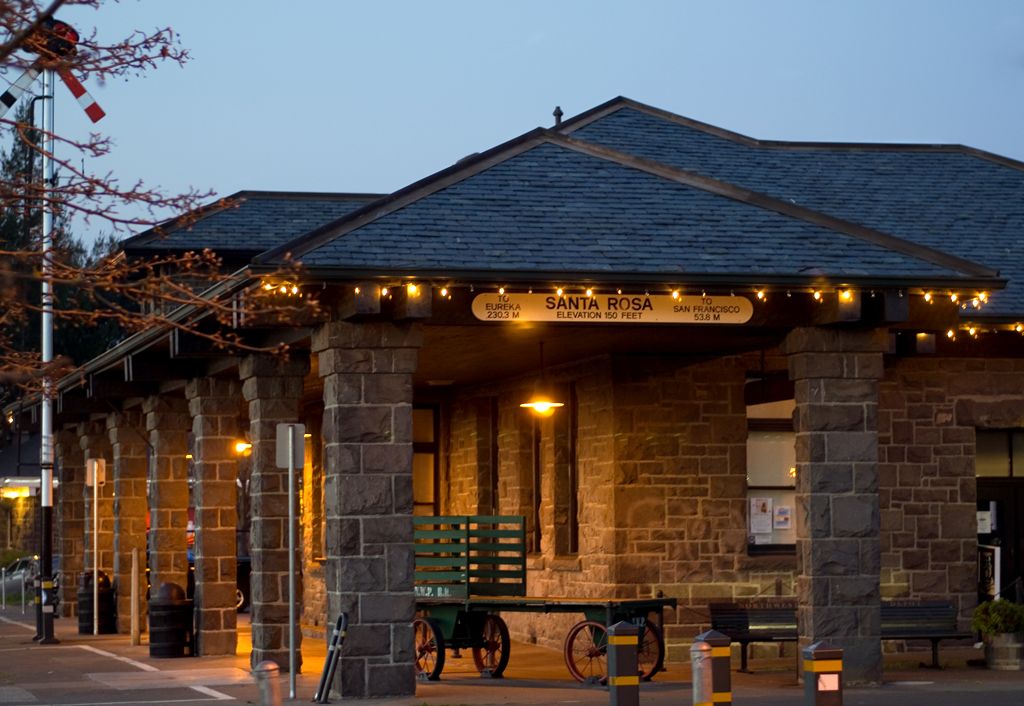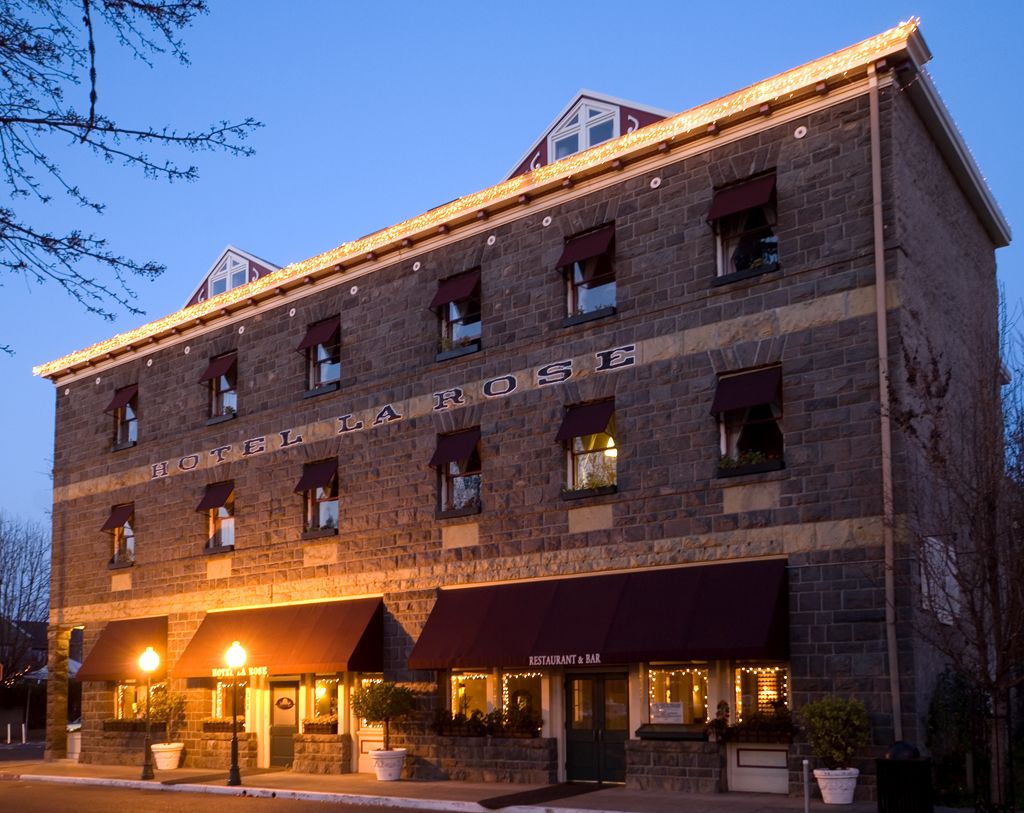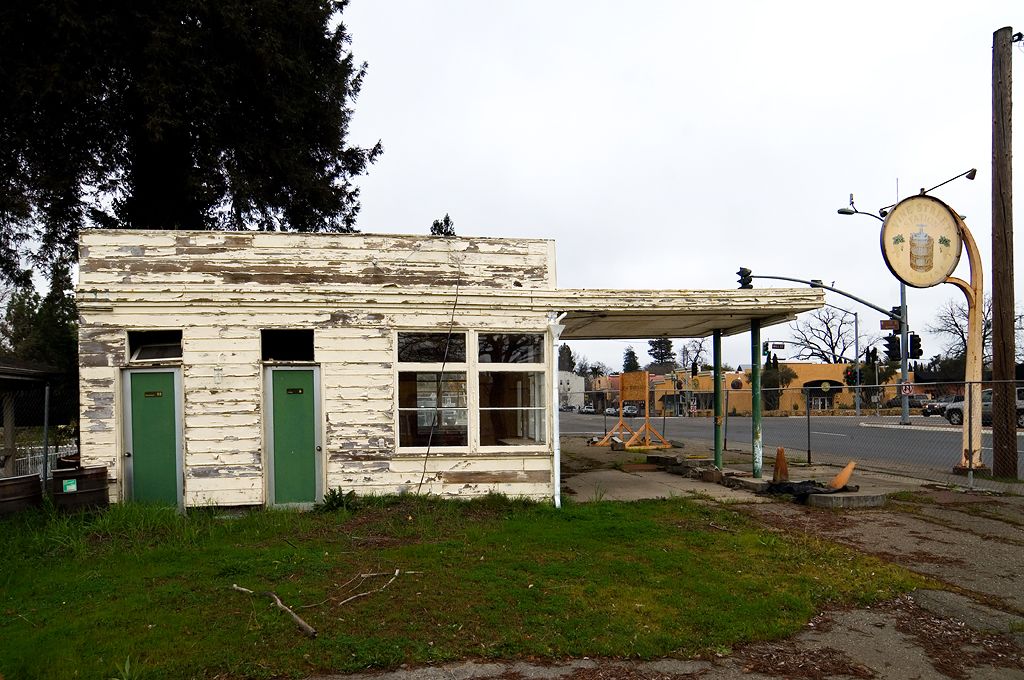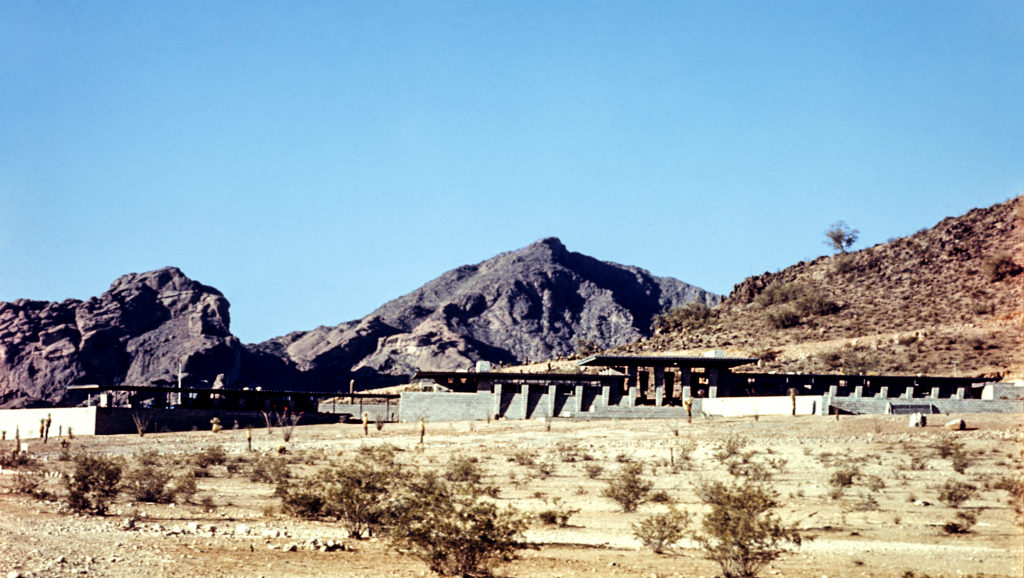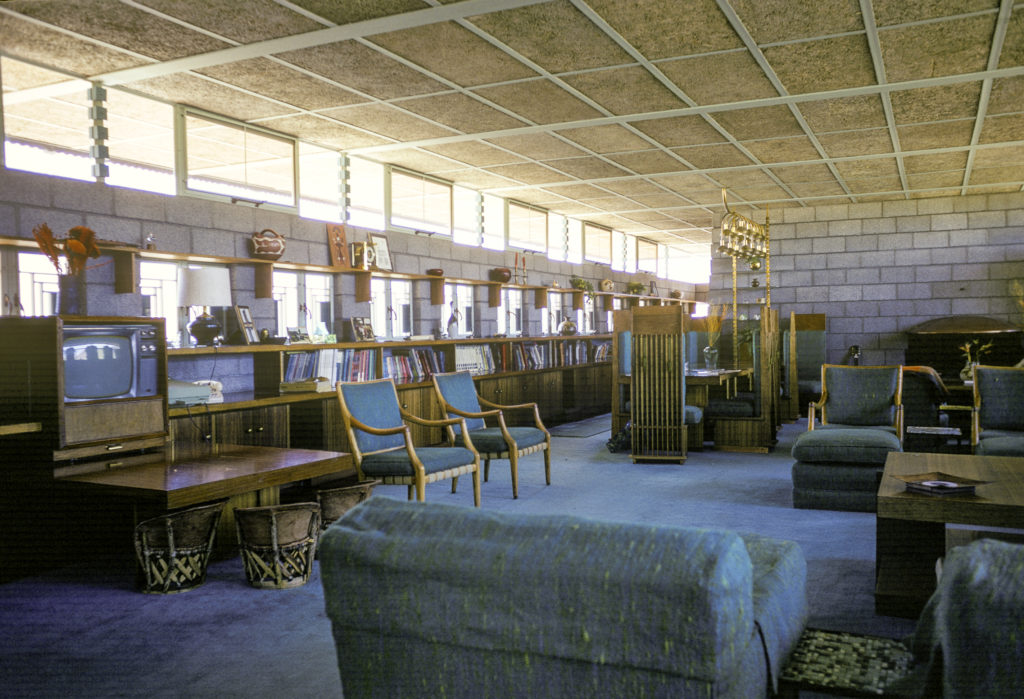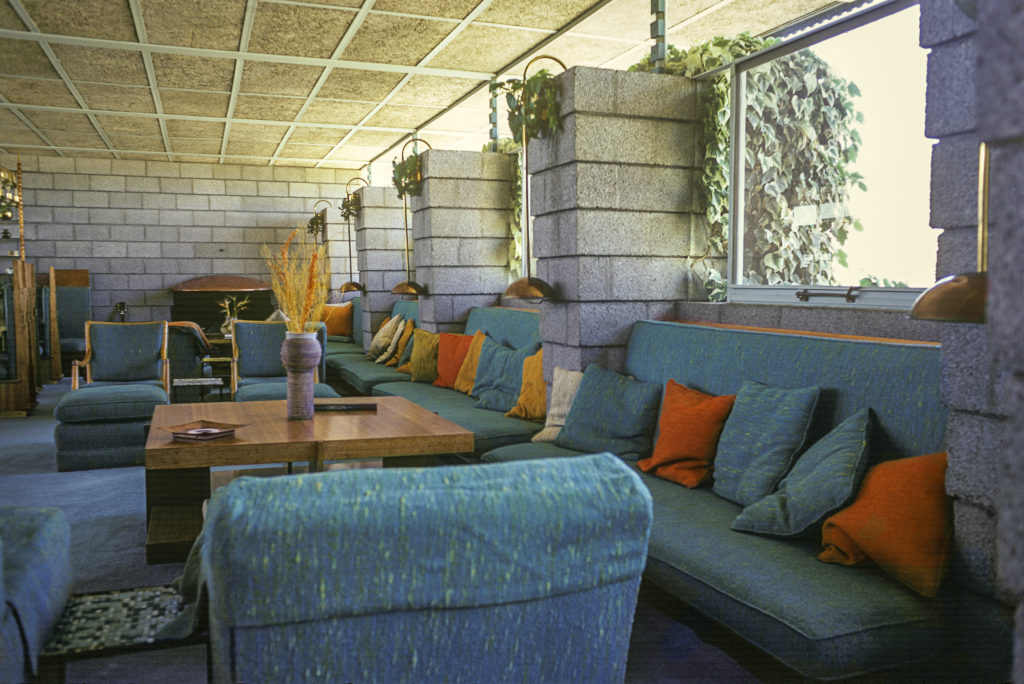
The Sturges

Historic photo of the 1939 Sturges House by Frank Lloyd Wright. Photo by Wright’s photographer Pedro E. Guerrero, 1947. It is always interesting to find a photo where you can compare and evaluate the contrast between Wright’s timeless design and the bygone style of cars or fashion.
Image source: enriquedlcm.tumblr.com
Image source: The Guardian
The home was owned for long time by actor Jack Larson, who lived here until his death not long ago. He was famous for a role that accounts for only a small part of his overall career – playing Jimmy Olson in the TV version of Superman.
My Kodachrome slides of the Sturges House, Brentwood, CA from June of 1970. It is an example of Wright’s Usonian design principles outlined in his books “The Natural House,” and “The Living City.” Wright preferred to say Usonian when the context was specific to the United States. The word American should never exclude Canada or Mexico, being they are also part of America. And not to forget South America.
The historic designation of this house points to the fact it is the only structure in Los Angeles representing his midcentury Usonian style of design and construction.
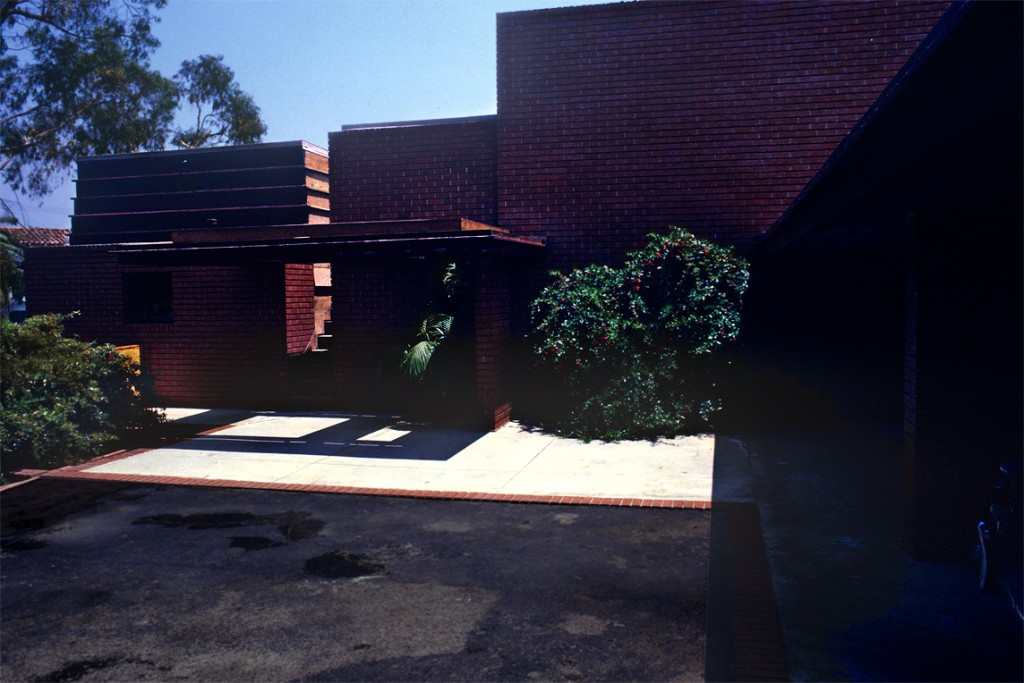
Most angles of the house show a windowless mass of either brick or shiplapped redwood. The stairs lead to a rooftop sunning deck. Carport is on the right.
Here is the side of the home with the broad redwood balcony that really opens up to let the outside in.

Peering down to the balcony from the rooftop sunning deck. Note the cut out at the top left where the stairs lead up from the driveway area seen in the earlier photo.

Full view of the rooftop deck.
Diagram showing the massing required to carry the weight of this bold cantilevered home. Wright’s apprentice assigned to help build this home was John Lautner who became one of the Century’s important Frank Lloyd Wright trained architects.
There are a number of design ideas that Wright returned to over and over in his career. This type of dramatic cantilevering was explored by Wright most famously in his “Falling Water” house in Pennsylvania.
Sturges House interior view. Source: sdrdesign.com
From the Historic Designation report, City of Los Angeles.
